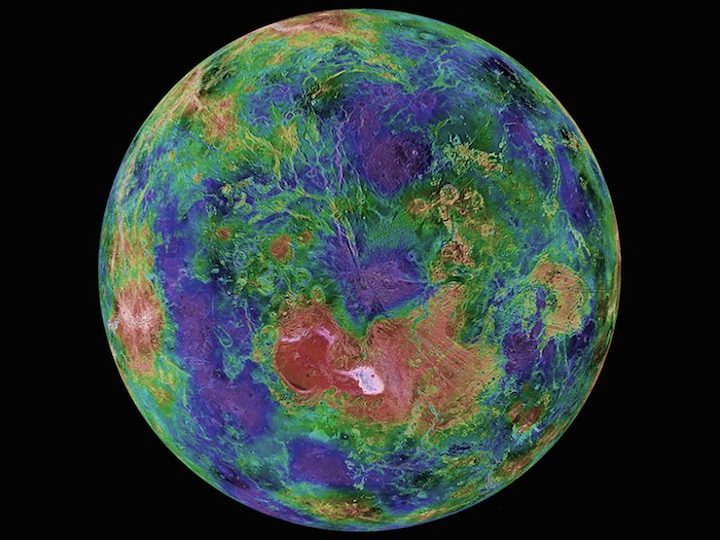.
Why It's Time for a New Mission to Venus
A packed session entitled "Unveiling Venus" at the recent Lunar and Planetary Science Conference shows renewed interest in our sister planet.

At this year’s Lunar and Planetary Science Conference there was renewed interest for Venus with an exciting full session dedicated to our sister planet. Venus has not had a dedicated NASA mission since Magellan ended in 1994 and we do not have physical samples (in the form of meteorites or returned samples) from Venus as we do for Mars, the Moon, asteroids, and a comet; therefore, Venus does not always get the attention it deserves.
Interestingly, many of the presenters in the session were not in planetary science during Magellan’s campaign, yet several of their talks relied on the Magellan radar data, which gives clues of the physical properties and geologic structures of the Venus surface. Others relied on even older data from the Soviet landers of the 1970s and 1980s, which analyzed rocks and soils on the surface, as well as recent data from the ESA Venus Express mission (2005-2015) which mainly provided atmospheric data and limited spectroscopic data of the surface.
The presentations in the session focused on three main scientific questions: 1) atmosphere-surface interactions and what minerals are potentially stable under the harsh surface conditions, 2) petrology and volcanology including the potential for recent and possibly active volcanism, and 3) geophysics focusing on evolution of Venus’ tectonic regimes.
There was a series of talks about alteration minerals on the surface of Venus that experimentally investigated what minerals should be present on the surface. Conditions on the surface of Venus are very different than those on the Earth: Venus has about 90 times the surface pressure, much higher temperatures (~465°C), a liquid water-free surface, and importantly an atmosphere that is sulfur- and carbon dioxide-rich which makes for a hot acidic surface environment; therefore different minerals are expected to be present. Minerals common on Earth such as sodium- and calcium- sulfates, carbonates, and silicates, as well as minerals very uncommon on Earth such as bismuth tellurides and sulfide mixtures, were suggested to be potentially present at different regions of Venus.
Allan Treiman presented preliminary results on whether the Nissaba region on the planet contains evidence for recent explosive volcanism, which would suggest that Venus may still be geologically active. Continuing discussing volcanism and timing, Chris Malliband and coauthors investigated the geological history of the mountain Aleksota Mons and concluded that the vents represent a field of small shield volcanoes that align with localized faulting in the region, suggesting a similar timing of both.
This provided a transition of the session from volcanism to tectonics and geophysics for the last five talks of the session, with a particularly interesting talk ending the session by Matt Weller and Walter Kiefer. Venus does not have plate tectonics and plate recycling as the Earth does but Venus has evidence for young volcanism which resurfaced as much as 80% of the crust. Weller presented models that could explain global scale melt production and resurfacing as a natural function of the evolution of a planet transitioning from Earth-style plate tectonics to a stagnant lid regime. These results, along with the rest of the session, suggest that Venus is a geologically diverse planet.
Many of the presentations concluded with implications for a potential future Venus mission and how the new results could constrain what we may see on the surface. Other presentations provided constraints on the types of data a new mission would need to return in order to improve our understanding of our sister planet. It’s definitely time for a new mission!
Quelle: AGU
